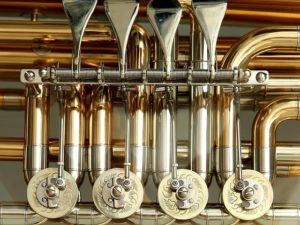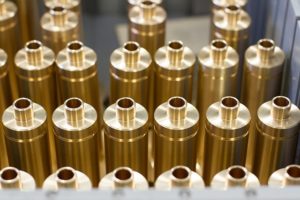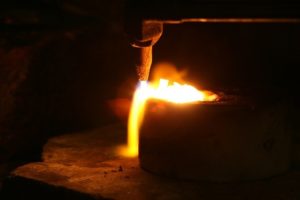According to the U.S. Geological Survey, every American born in 2008 will use about 1,309 pounds of copper throughout their lifetime for necessities, lifestyles, and health. Despite the many uses of copper and its obviously critical role in everyday life, very few can be bothered to learn a thing or two about copper. Chances are the only copper most people know of are old coins and plumbing fixtures. Some don’t even know that the electrical wires crisscrossing their home are made of copper, too. Here’s to fill you in with other interesting facts about copper before you decide using it for your projects.
Discovery and Development
One of the reasons why copper is so popular is that it’s one of the first metals to be discovered and utilized, just next to gold and silver. The fact that it has better properties and therefore more uses than gold and silver expedited its popularity even more. In spite of this, it still took about 2000 years for ancient metallurgists to fully understand copper’s alloying qualities. At the time they’d already unearthed other metals, such as tin and zinc, and when they combined copper with tin, they were able to produce bronze for the first time.
The discovery of bronze marked the beginning of a race to produce new materials out of copper, which led to industrial revolution when metal manufacturers decided to apply the same method with other metals. It becomes the key to expanding the main uses of copper. If not for this reason, metallurgy would have been confined with eliminating impurities from metals, and alloying wouldn’t be possible.
Properties and Applications
Copper is part of a group of elements called “noble metals”. This group consists of metals that are resistant to corrosion and oxidation in moist air. But that’s just one of their common properties. Each of them has other unique properties that are useful for specific applications. Copper is one of the few that exhibit a considerable number of valuable properties. Apart from the everyday uses of copper, here are some special applications that benefit from copper’s amazing properties.
High Electrical Conductivity.
As mentioned earlier, the electrical wires in your home are made of copper. Obviously, that’s because copper has very high electrical conductivity. It only comes next to silver when it comes to electrical conductivity but the reason manufacturers prefer copper is that its thermal expansion coefficient is much lower than silver. This means it won’t burn even when conducting high voltages.
Antimicrobial Properties.
Like most noble metals, copper is also capable of killing bacteria around it. This is caused by a reaction known as oligodynamic effect. Ions in copper react with thiol or amine groups of proteins, which is present in virtually all kinds of microorganisms, a reaction that leads to their demise. This unique property makes copper suitable for applications that involve conveying or purifying fluids. It’s even a preferred material for kitchen and bathroom countertops and backsplashes.
Corrosion Resistance.
Apart from resisting microbes, copper and other noble metals are also capable of resisting corrosion. Unlike iron, which instantly combines with oxygen from moisture to form rust and starts disintegrating after that, copper develops a layer of protection called patina on its surface instead. This prevents the inner layer from corroding, literally preserving the metal to last for ages. Such a unique property is of paramount importance in applications that require metal parts to be soaked in water or exposed to the elements.
With these few properties alone, copper can easily outperform a number of widely utilized metals. Of course, it has a host of other properties that set it apart from the rest of the noble metals. To make sure that the copper products you are using are of high quality, it helps to find the best supplier in your area. Preferably, look for a supplier that has been in operation for many decades and manufactures its own products from its own advanced foundry. Rotax Metals is the perfect example of that.




